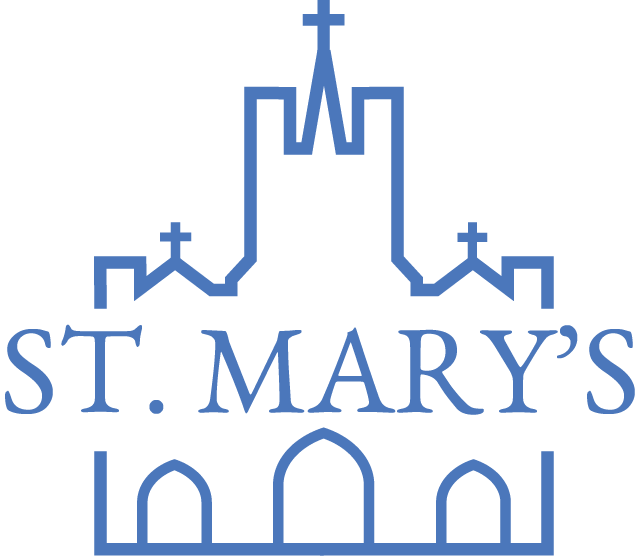17 Jan Second Sunday in Ordinary Time
Second Sunday in Ordinary Time
Father Shawn Hughes
Homilies are never the creative act of one person. Thus, in posting these homilies on St. Mary’s Cathedral’s website I would like to state first and foremost that there will be little original in the following. My homilies are a result of my prayer, reading and study as it pertains to the particular gospel of the week. Thus, I beg, borrow and steal from the wisdom of those who have gone before me and together with the Holy Spirit acting in my own prayer considering the needs of our particular parish community here at St. Mary’s, a homily appears by the weekend. If there is something that edifies you I can take no credit for it. ‘Tis the result of the work of the Holy Spirit and those from whom I have gleaned wisdom over time. If there is something that you might wish to discuss I am always available and would welcome any opportunity to speak about the Scriptures and/or the Spiritual Life.
God bless you.
Father Shawn
Behold the Lamb of God, behold Him who takes away the sins of the world.
These words come from the gospel we have just heard. John the Baptist points out Jesus to his followers as the Lamb of God.
We use this expression during every Mass:
Lamb of God, you take away the sins of the world. Have mercy on us.
Lamb of God, you take away the sins of the world. Grant us peace.
And as the priest elevates the Sacred Host, the bread transformed into Christ’s body, he says:
“Behold the Lamb of God, behold Him who takes away the sins of the world.”
It is an expression with deep historical meaning for the Jewish people, our ancient brothers and sisters in the faith, and since Jesus is the fulfillment of the ancient Jewish faith, it has deep significance for us.
Describing Jesus as the Lamb of God would resonate profoundly with those hearing it from John the Baptist for the first time.
1900 years before Jesus. Abraham, the great founder of the Jewish Faith and therefore ours, was asked to offer his son, Isaac, as a sacrifice to God, in order to test his trust and obedience to God. Abraham prepared to do this but, when it was clear that he was willing to sacrifice his most beloved son, the most precious possession he had, his hand was stopped by an angel. When Isaac asked where was the lamb for the sacrifice, not knowing he was to be the sacrifice, the Scriptures assures us that “God would provide the Lamb.” (Genesis 22:8) 1900 years later he does so in Jesus.
Describing Jesus as the Lamb of God most particularly recalls the Passover Lamb.
- 1200 years before Christ, on the last night in Egypt as the Jewish people prepared to leave 400 years of slavery and be led by Moses to the Promised land, they killed a lamb and put its blood on the doorframes of their houses as protection from the angel of death who would pass through Egypt that night taking the firstborn of the Egyptians. (Exodus 12:3-14)
- They used a branch of hyssop shrub to smear its blood on the doorframes of their houses (Exodus 12:21-23)
- And not a bone of the slaughtered lamb was to be broken (Exodus 12:46).
The Gospel of John presents Jesus as the fulfillment of the Old Testament Passover Lamb. In the Old Testament a lamb’s blood saved the Jewish people from disaster before they left Egypt and now the blood of Jesus, the New Passover Lamb, saves us from our sins.
- In the Gospel of John, Jesus dies on the cross at the very moment the Passover lambs were being slaughtered in the temple by the Jewish priests. Every morning and every night a lamb was slain and offered in the temple for the sins of the people. John’s Gospel wants us to understand that Jesus has replaced and is the fulfillment of the Jewish rites and liturgies of the Old Testament. Only in the once only sacrifice of Jesus on the cross can we be fully delivered from the power of sin. Every time we celebrate Mass we participate in that once only sacrifice of Jesus on the cross…receiving and renewing the graces that event bestowed on the world.
- When Jesus was dying on the cross John tells us, “A bowl full of vinegar stood there; so they put a sponge full of the vinegar on hyssop and held it to his mouth.” (John 19:29). This recalls the hyssop being used by the Hebrews to smear the blood of the Passover lambs on the door frames. (Ex 12:21-23)
- Finally no bone, like the Passover lamb, (Exodus 12:46)… No bone of Jesus was broken during his Passion. (John 19:31-33)
The Gospel of John wants us to understand that God has done a completely new thing for us in Jesus. There is a totally new way of relating to God in Jesus. Now the way to the Father is not through the sacrifice of animals but through Jesus, through his self-sacrificial offering of love on the Cross. All the ceremonies and sacrifices of the Old Testament have come to an end. Now Jesus is our way to the Father. Just as the lamb’s blood spared the Jews before they left Egypt so now it is the blood of Jesus that saves us from our sins. Therefore John the Baptist proclaimed, “Behold, the Lamb of God, who takes away the sin of the world!” (John 1:29)
600 years before Jesus, when our first reading was written, the writer of this section of the book of Isaiah, refers to Jesus as a servant and a little later refers to the messiah as a suffering servant led like a lamb to the slaughter. (Isaiah 53:7) Again this prophecy will be fulfilled in Jesus. The writer of this section of the book of Isaiah prophecies one who by his sufferings and his sacrifice, meekly and lovingly borne, would redeem his people. Again this prophecy will be fulfilled in Jesus.
And an image less familiar to us, about 150 years before Jesus, the Maccabbees were a very brave Jewish family who fought hard to throw off the Roman oppressors, who had desecrated the temple. Of them there is the image of the lamb with horns, the ram…the great conqueror. This image was also used to describe King David and his son, King Solomon. It was used to describe the great prophet Samuel. We see this image in the book of Revelation as well.
29 times the writer of the book of Revelation uses the image of the Lamb of God. We mention it five times in every single Mass. It has become one of the most precious titles of Christ. A title, Lamb of God, that sums up the love, the sacrifice, the suffering and the triumph of Christ; the Lamb of God who takes away the sins of the world.
Foundationally we receive our sins taken away in our Baptism. In Baptism each of us was redeemed. The Lamb of God’s self-sacrificial love has redeemed us. Has paid the price of our sins. Has restored us to the original value, the dignity we were originally created to have. Thus, the Church has always taught that if a person were to die the moment after they are baptised they would go straight to heaven.
All are redeemed in Baptism. This same Lamb of God, Jesus Christ, knew that we would not be able to live at that level…the stain of original sin has been washed away from our souls in Baptism…however we still suffer from the consequences of original sin…We need the grace of the other sacraments to keep us at our baptismal level. When we fall, we need the grace of Confession to restore us. We need the grace of the Eucharist and Confirmation to keep us strong, to resist evil and temptation so as to live at our baptismal level. We need the grace of the Sacraments of Vocation…of marriage and priesthood to helps us to live the life to which we are called. And we need the grace of the Sacrament of the Sick for healing and perseverance when we are very ill or elderly.
The main reason the church exists is to provide us with the grace of Baptism and then with all the other sacraments to keep us at our baptismal level. We can receive the grace of the Eucharist and Confession over and over again. And we should. So that we can live at the level God originally intended us to live. We receive the redemption of Christ in baptism and through our cooperation with the grace of the sacraments we work out our salvation throughout our lives.
God has done a completely new thing for us in Jesus. There is a totally new way of relating to God in Jesus. Now the way to the Father is through Jesus. Jesus is the Passover Lamb whose blood was shed to save each and every one of us.
We are reminded of this at every Mass before receiving the real presence of Our Lord and Saviour in Holy Communion when the priest holds up the Sacred Host and proclaims,
Behold the Lamb of God, Behold Him who takes away the sins of the world.
Our immediate response is that we are not worthy…using the words of the centurion in chapter 8 of Matthew’s gospel we say…
“Lord, I am not worthy that you should enter under my roof, but only say the Word and my soul shall be healed.”
…and…we are not worthy. But he makes us worthy…the Word has been spoken, the Word has been spoken and that Word, who is the Son of God, the Lamb of God, has self-sacrificially laid down his life for us.
The next words spoken by the priest couldn’t be truer!!!!!
“Blessed are those called to the supper of the Lamb.”
Blessed are we who are called to the supper of the Lamb.
We have just finished the Christmas season…celebrating our God who so loved us that he humbled Himself to take on our humanity…why ?? so that we could share in His divinity. Receiving the Grace of His self-Sacrificial Love in His Suffering, Death and Resurrection…if we choose to cooperate with it.
Thus, entering into what St. Augustine would exhort those to whom he was giving Holy Communion. As he held the Blessed Sacrament up for them to receive Holy Communion he would declare:
“Become the One, Whom you are about to receive!”

